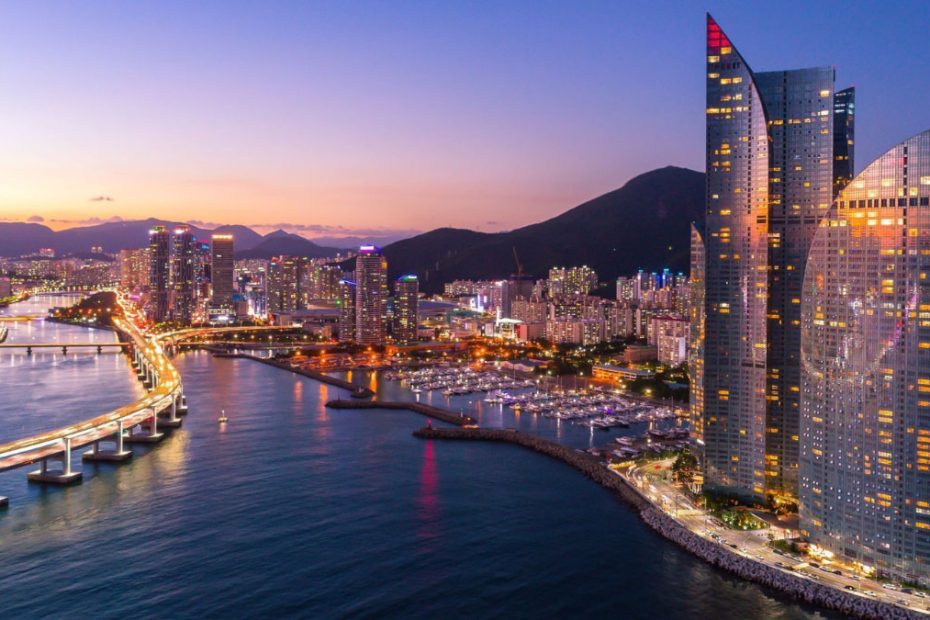Planning a trip to Korea can be both exciting and overwhelming with so many incredible places to explore. From bustling cities to serene temples, Korea offers a perfect blend of modernity and tradition. With just seven days, you can experience a curated journey that captures the essence of this vibrant country.
In this itinerary, I’ll guide you through must-see destinations, mouth-watering cuisine, and cultural experiences that will make your week in Korea unforgettable. Whether you’re a history buff, a foodie, or an adventure seeker, this seven-day plan ensures you won’t miss out on the best Korea has to offer.
Key Takeaways
- Balanced Blend of Tradition and Modernity: The seven-day itinerary in Korea offers a rich mix of historical sites, modern attractions, and natural wonders, making for a well-rounded travel experience.
- Must-Visit Cities: The itinerary covers key destinations like Seoul, Busan, and Jeju Island, ensuring travelers experience Korea’s diverse urban and natural landscapes.
- Cultural and Culinary Highlights: From exploring Gyeongbokgung Palace and the DMZ to tasting local delicacies like Kimchi and Bulgogi, this itinerary provides a deep dive into Korea’s cultural and culinary heritage.
- Unique Experiences: Activities like hiking Hallasan Mountain, exploring the Manjanggul Lava Tube in Jeju, and visiting the Jagalchi Fish Market in Busan offer unique adventures for all types of travelers.
- Convenient Travel Options: Recommendations for transportation, accommodation, and guided tours ensure a smooth and hassle-free journey, making it easier to explore the best of Korea.
- Final Day in Seoul: The itinerary concludes with shopping, a visit to N Seoul Tower, and relaxation at a traditional Jjimjilbang, allowing travelers to end their trip on a high note.
Overview Of The 7 Days Itinerary In Korea
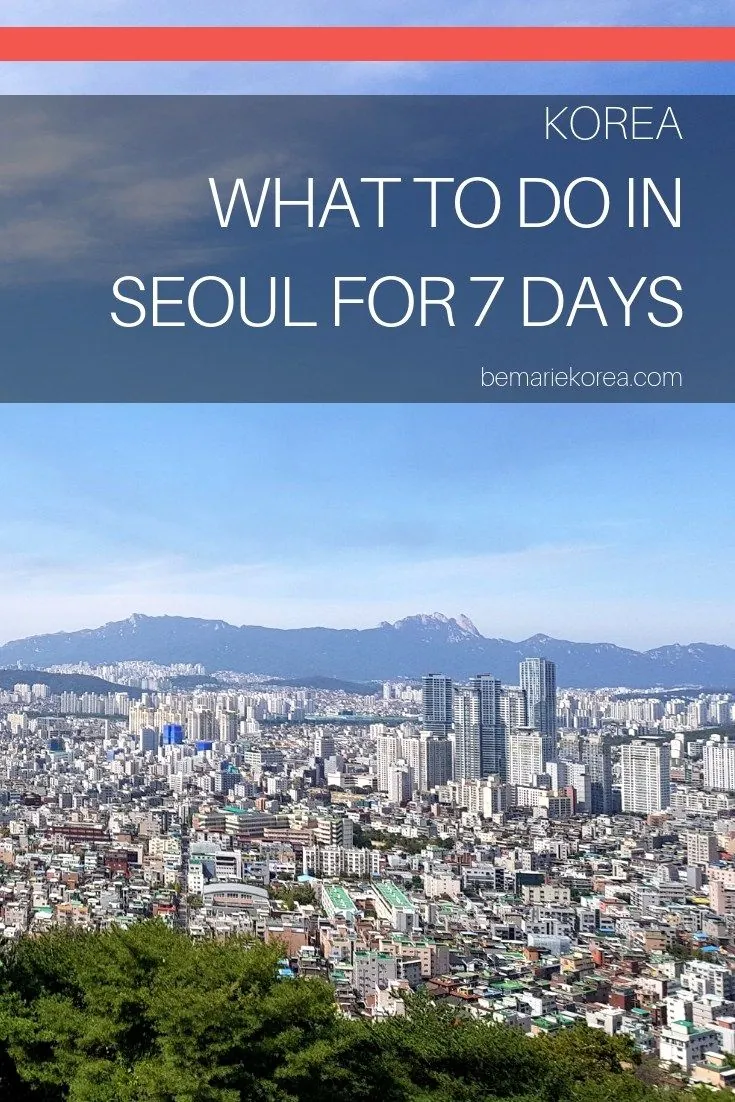
A seven-day itinerary in Korea offers a perfect blend of modernity and tradition, covering key cities, historical sites, and natural wonders. After arriving at Incheon International Airport, the journey begins in Seoul.
Day 1: Arrival In Seoul
Upon landing at Incheon International Airport, I head straight to Gyeongbokgung Palace. This is the largest and most iconic of Seoul’s Five Grand Palaces, offering a deep jump into Korea’s royal history. Next, I explore Insadong, a district that beautifully combines tradition and modernity. Wandering through Bukchon Hanok Village offers a glimpse of traditional Korean life with its well-preserved hanoks (traditional Korean houses).
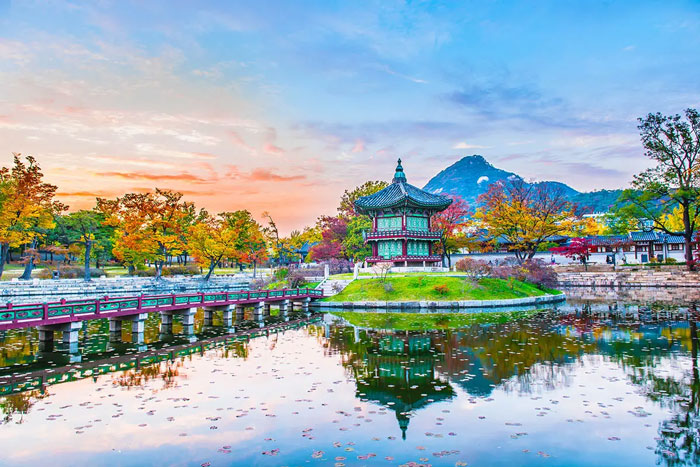
Day 2-3: Seoul
On Day 2, I visit Nami Island, renowned for its scenic beauty and tranquil atmosphere. After soaking in the sights, I take a train to Busan, South Korea’s second-largest city.
Day 4-5: Busan
In Busan, I spend time at the Jagalchi Fish Market, the largest seafood market in South Korea. This market offers an array of fresh seafood, exemplifying the region’s rich maritime culture. I also explore Yongdusan Park and ascend Busan Tower for panoramic city views.
Day 6: Jeju Island
On Day 6, I fly to Jeju Island, famous for its stunning natural world. After a day exploring the island’s volcanic craters and beautiful beaches, I spend the night on Jeju, ensuring I capture both sunrise and sunset over this Pacific paradise.
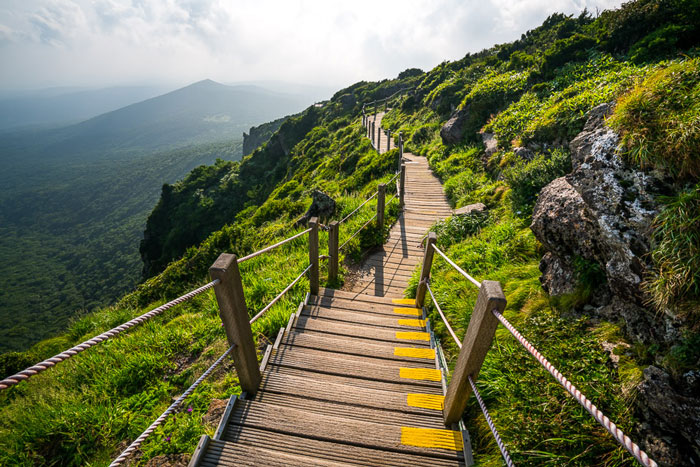
Day 7: Return To Seoul
On the final day, I return to Seoul, allowing time for last-minute shopping and exploring before heading back to Incheon International Airport for my departure.
Day 1: Arriving In Seoul
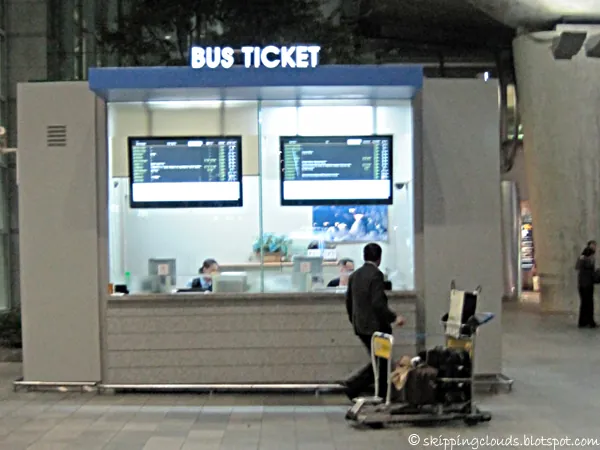
Arriving in Seoul sets the stage for an exciting seven-day journey in Korea. The city offers a mix of historic landmarks and vibrant neighborhoods. Let’s explore some must-visit attractions and local cuisine.
Key Attractions
Gyeongbokgung Palace: As the largest of Seoul’s Five Grand Palaces, Gyeongbokgung stands as a testament to Korea’s royal history. Its stunning architecture and the traditional changing of the guard ceremony captivate visitors. I recommend allocating at least two hours to fully appreciate the palace grounds and the National Palace Museum.
Insadong: Insadong blends tradition and modernity, making it a unique cultural hub. Antique shops offer traditional Korean items, while art galleries showcase contemporary works. The tea houses are perfect spots for relaxing, and street vendors sell handmade crafts and snacks. Spend a few hours here to soak in the atmosphere.
Bukchon Hanok Village: Bukchon offers a glimpse into Korea’s past with its well-preserved hanok houses. Walking through its narrow lanes provides picturesque views and a deep cultural experience. The village is ideal for photography enthusiasts and those interested in traditional architecture. Plan for a couple of hours to explore fully.
Local Cuisine
Kimchi: Kimchi is a staple in Korean meals, consisting of fermented vegetables like cabbage. Rich in probiotics, it pairs well with almost any dish. Every Korean household has its own unique recipe, making it a must-try.
Bulgogi: Bulgogi, marinated beef grilled to perfection, is one of Korea’s most beloved dishes. It’s typically served with side dishes like kimchi, lettuce wraps, and dipping sauces. I recommend trying it at a locally-owned restaurant for an authentic taste.
Street Food: Seoul’s street food scene is a culinary adventure. Crispy fried chicken, spicy tteokbokki, and sweet ssiat hotteok are some popular options you shouldn’t miss. Night markets like Myeongdong and Gwangjang Market are great places to sample a variety of street foods. Allocate time in the evening to explore these bustling markets.
Starting with these attractions and local dishes sets a vibrant tone for the rest of your Korean journey, immersing you in the rich culture and flavors of Seoul.
Day 2: Exploring Seoul

On Day 2, investigate into Seoul’s rich history and vibrant modernity. Begin with historical sites, then transition to the city’s modern attractions for a full cultural experience.
Historical Sites
Jogyesa Temple: Jogyesa Temple, nestled in the heart of Seoul, stands as the chief temple of the Jogye Order of Korean Buddhism. Founded in the 14th century, it’s renowned for its annual lantern festival that transforms the area into a radiant spectacle.
Gyeongbokgung Palace: The grandest of Seoul’s Five Grand Palaces, Gyeongbokgung Palace, built in 1395, served as the main royal residence for centuries. The complex features iconic structures like Geunjeongjeon Hall and Gyeonghoeru Pavilion, offering fascinating insights into Korea’s royal heritage.
Insadong & Ikseongdong: Insadong and Ikseongdong provide a blend of tradition and modernity. Insadong charms with its art galleries, antique shops, tea houses, and old calligraphy stores. Nearby, the Hanok Village of Ikseongdong, popular among young locals, boasts Western-style cafes, shops, and eateries housed in beautifully converted traditional homes.
Modern Attractions
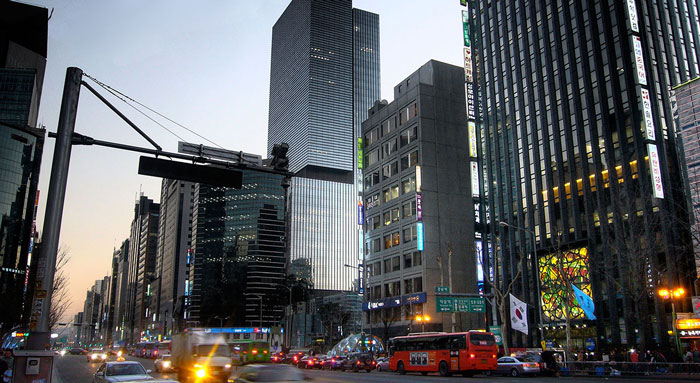
After soaking in history, Seoul’s modern attractions await.
Dongdaemun Design Plaza (DDP): Start with Dongdaemun Design Plaza, a modern architectural marvel hosting exhibitions, fashion shows, and cultural events. Zaha Hadid’s futuristic design makes DDP a must-see.
Gangnam District: Head to Gangnam, synonymous with luxury and pop culture, to explore high-end shops, trendy cafes, and vibrant nightlife. The district also features COEX Mall, the largest underground shopping center in Asia.
Lotte World Tower: Finally, visit Lotte World Tower, South Korea’s tallest building, offering an observation deck with panoramic views of Seoul. The adjacent Lotte World Mall includes shops, an aquarium, and entertainment facilities, making it a perfect end to your day.
Seoul’s blend of the ancient and the contemporary promises an unforgettable experience.
Day 3: Day Trip To DMZ

Day 3 involves a fascinating day trip to the DMZ, a unique and historically significant area on the Korean Peninsula.
Transportation Options
Reaching the DMZ from Seoul offers a couple of reliable options. The high-speed KTX train provides a quick and efficient journey. I find this option ideal if I’m pressed for time since it’s fast and comfortable. The train departs from Seoul Station and reaches the DMZ area in under two hours.
Alternatively, joining a guided tour bus is highly recommended because the DMZ has restricted access, and you can’t visit independently. These tours typically include round-trip transportation and a knowledgeable guide. The convenience of a guided tour ensures comprehensive coverage of key sites without exploring complex logistics.
Sightseeing Highlights
The DMZ offers several must-visit sites rich in historical context. The Third Infiltration Tunnel stands out as one of the most intriguing. Discovered in 1978, this tunnel, dug by North Koreans, lies 73 meters below the surface and stretches 1.6 kilometers, including 435 meters into South Korean territory. Walking through this tunnel offers a stark reminder of the ongoing inter-Korean tensions.
Next, Unification Village (Tongil-Chon) provides a glimpse into the life of those living within the Civilian Control Zone. This small settlement allows visitors to purchase unique souvenirs and sample local food and drinks. It’s an authentic experience that adds a personal touch to the historical and political significance of the DMZ.
These activities offer a balanced mix of education and culture, making the day trip to the DMZ a memorable part of exploring Korea.
Day 4: Discovering Gyeongju
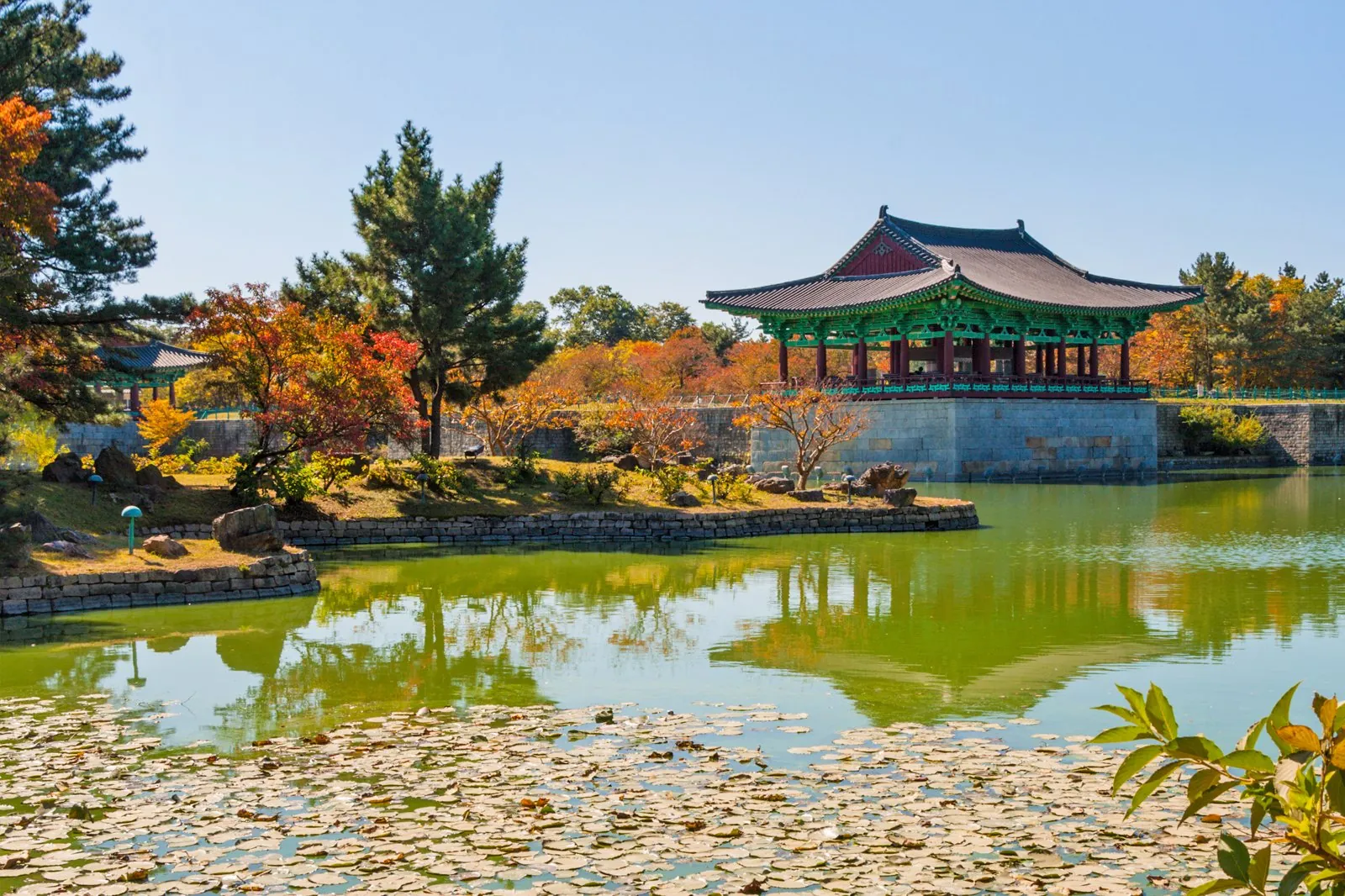
Day 4 of my Korean adventure takes me to Gyeongju, a city known for its rich cultural heritage and historical treasures.
Cultural Treasures
I started the day by visiting Andong Hahoe Folk Village on the way to Gyeongju. This village, a UNESCO World Heritage site, offered glimpses into traditional Korean life with thatched-roof houses and centuries-old customs. From there, I made a brief stop at Buyongdae Cliff for panoramic views of the village and Taebaeksan Mountain Range, which served as a picturesque backdrop.
Next, I explored Byeongsan Seowon, a Confucian academy established in the 1300s. The academy’s serene atmosphere and historic architecture made it a worthwhile stop. My final detour before reaching Gyeongju was the Hanji Factory, where I observed traditional Korean papermaking. The intricate process of crafting Hanji paper showcased Korea’s rich artisan heritage.
Upon arriving in Gyeongju, I delved into its cultural treasures. First on the list was Bulguksa Temple, an iconic Buddhist temple featuring stunning statues, stone pagodas, and wooden shrines that date back centuries. Bulguksa Temple is a testament to the artistic prowess of the ancient Silla Kingdom.
I then visited Seokguram Grotto, an impressive stone temple over 1,300 years old. Carved into the mountainside, this grotto houses a serene Buddha statue surrounded by intricate stone carvings.
Next, I explored Daereungwon Tomb Complex, specifically Cheonmachong, one of the largest tombs from the Silla Kingdom. Walking through the tomb provided a unique glimpse into ancient burial practices and Silla’s royal history.
Finally, I stopped at Cheomseongdae, one of Asia’s oldest surviving astronomical observatories. Built during the Silla Kingdom, this structure provided fascinating insights into ancient Korean astronomy.
Accommodation Tips
In Gyeongju, I chose from a variety of accommodation options that catered to different budgets and preferences. For a luxurious experience, I stayed at a five-star hotel with modern amenities and stunning views of the city. These high-end hotels often include spas, swimming pools, and fine dining options, ensuring a comfortable and relaxing stay.
For a more traditional experience, I opted for a hanok stay. Hanoks are traditional Korean houses featuring wooden architecture and floor heating systems called ondol. Staying in a hanok allowed me to immerse myself in Korean culture, providing a unique and memorable lodging experience.
Budget travelers found comfortable and clean guesthouses and hostels scattered throughout Gyeongju. These accommodations provided essential amenities like Wi-Fi, communal kitchens, and friendly hosts, making them an excellent choice for those looking to save money without sacrificing comfort.
Conveniently located near major attractions, many hotels and guesthouses offered easy access to public transportation, ensuring I could explore Gyeongju without hassle. Pre-booking accommodations, especially during peak tourist seasons, ensured availability and potentially better rates.
Day 5: Visiting Busan
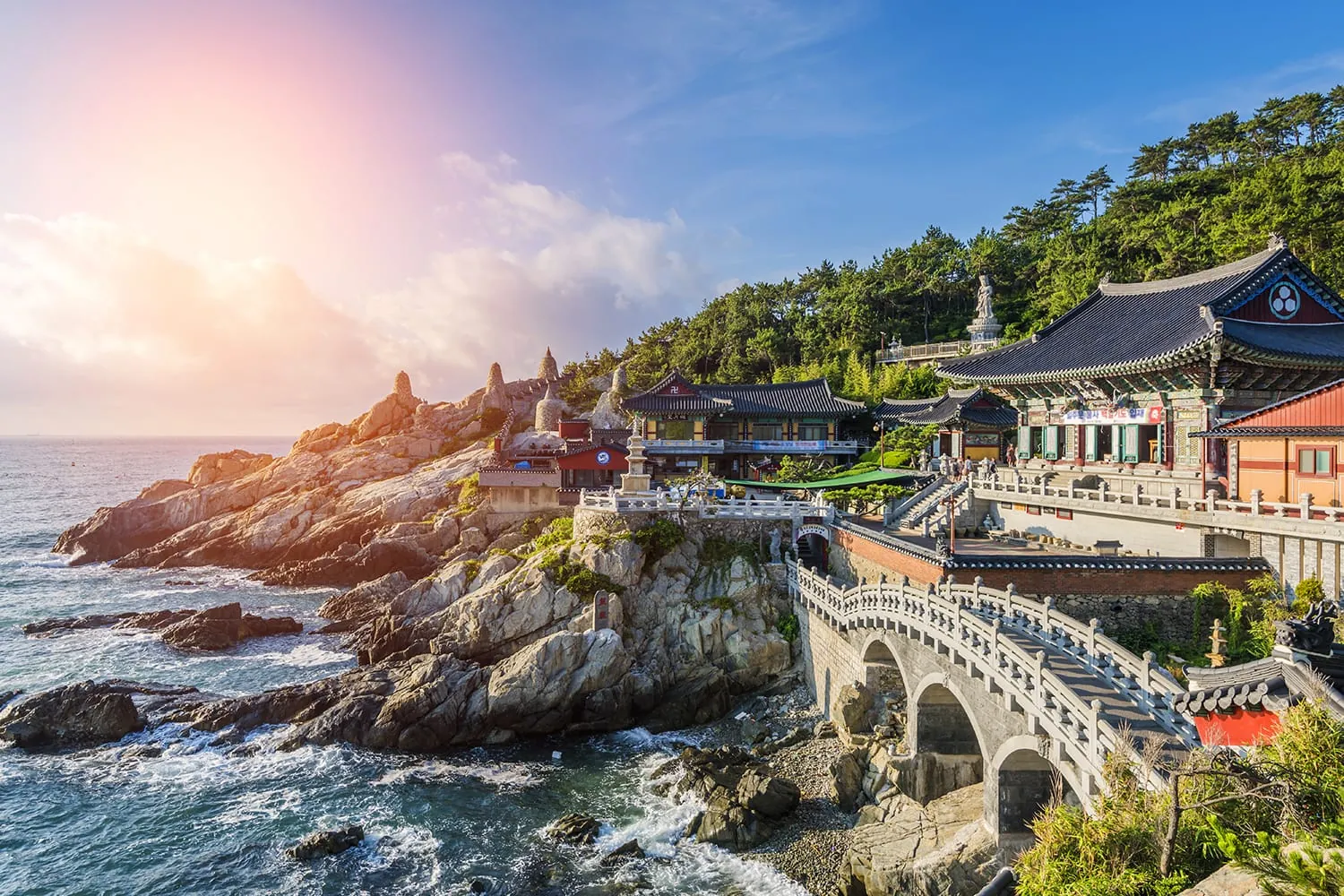
Exploring Busan means experiencing its beautiful beaches, scenic parks, vibrant nightlife, and bustling markets. This region offers unique activities suited for all travelers.
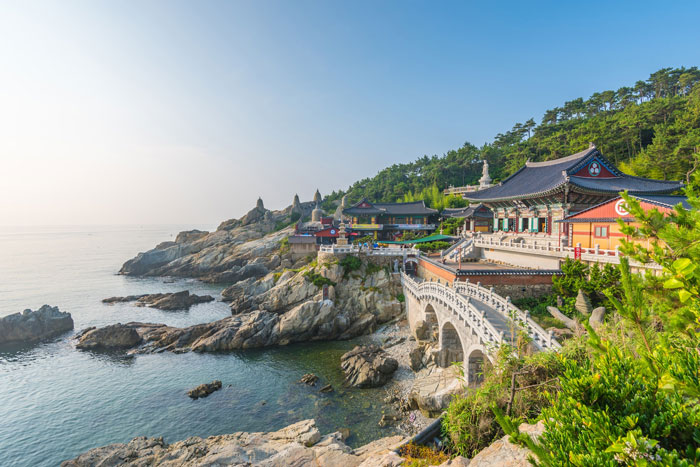
Beaches and Parks
Haeundae Beach tops my list, featuring gentle waves and soft, golden sand. It’s Busan’s most popular beach. Visitors can enjoy a serene beach experience, especially outside of the crowded summer months.
Songdo Bay Cable Car provides a picturesque ride over the water to Songdo Sky Park. The park offers nature walks, cozy cafes, and plenty of street food vendors. This is an ideal spot for casual exploration.
Cheongsapo embodies coastal charm with its iconic red and white lighthouses. It’s famous for its seafood, giving visitors a taste of local delicacies. Don’t miss walking the Cheongsapo Daritdol Skywalk for breathtaking panoramic views of the sea.
Nightlife and Markets
Haeundae Market bustles with energy, making it a perfect spot for evening exploration. This market offers a range of street snacks and local goods. I recommend trying hot honey hotteok, a local favorite.
Gwangalli Beach transforms at night, offering stunning views and a lively atmosphere. It’s a great place to unwind after a day of exploration. The beachside area becomes a nightlife hotspot, with plenty of bars and restaurants providing entertainment and refreshment.
With its mix of natural beauty and vibrant culture, Busan is a standout destination in Korea, blending the serene with the lively for a memorable experience.
Day 6: Jeju Island Adventure
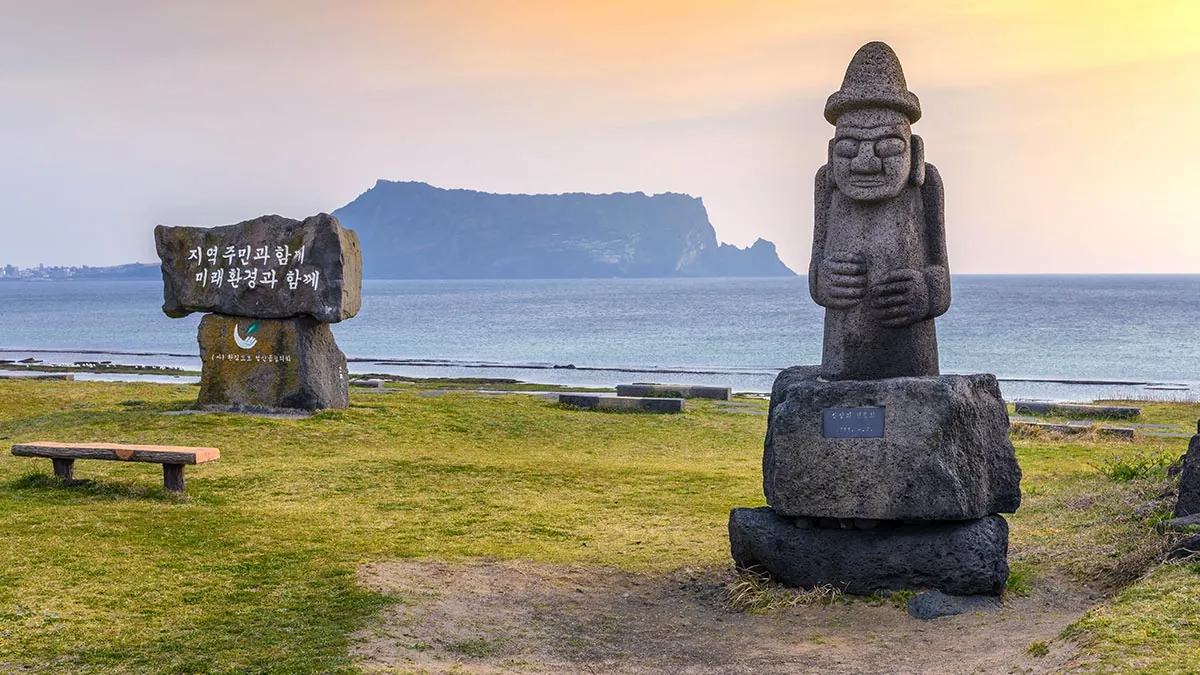
Jeju Island offers a blend of natural wonders and exciting activities. Day 6 is packed with must-see attractions and memorable experiences.
Natural Wonders
Jeongbang Waterfall: Jeongbang Waterfall is one of the few waterfalls in Asia that cascades directly into the ocean. It’s a breathtaking spot for photography and an ideal place to start your day.
Hallasan Mountain: As the highest peak in South Korea, Hallasan Mountain offers stunning views and unique flora. It’s listed as a UNESCO World Heritage Site and a popular hiking destination. You can find various trails suitable for different fitness levels.
Seongsan Ilchulbong Peak: This volcanic cone, formed by an underwater eruption, provides spectacular views from the top. It’s also known as Sunrise Peak and is ideal for those who enjoy early morning hikes.
Manjanggul Lava Tube: This 7.5 km long lava tube showcases impressive lava formations created by volcanic activity. Though only 1 km is open to tourists, it’s enough to marvel at the geological wonder.
Activities and Tours
Hiking Hallasan Mountain: Choose from various trails, including the Seongpanak Trail, to reach Hallasan’s summit. The panoramic views from the peak make the effort worthwhile. It’s best to start early to avoid midday heat.
Exploring Jeongbang Waterfall: Spend time taking photos and enjoying the natural beauty of Jeongbang Waterfall. The area around the waterfall offers additional scenic views and paths for light walking.
Climbing Seongsan Ilchulbong Peak: Start your climb early to experience the breathtaking sunrise from the top of Seongsan Ilchulbong Peak. It’s a relatively short hike, but the views of the surrounding world and ocean are unforgettable.
Touring Manjanggul Lava Tube: Take a guided tour of the accessible part of the Manjanggul Lava Tube. Guides provide insightful information about the tube’s formation and geological significance. The cool interior offers a pleasant respite from the heat.
Jeju Island’s mix of natural beauty and unique activities creates an unforgettable day filled with adventure and exploration.
Day 7: Return To Seoul
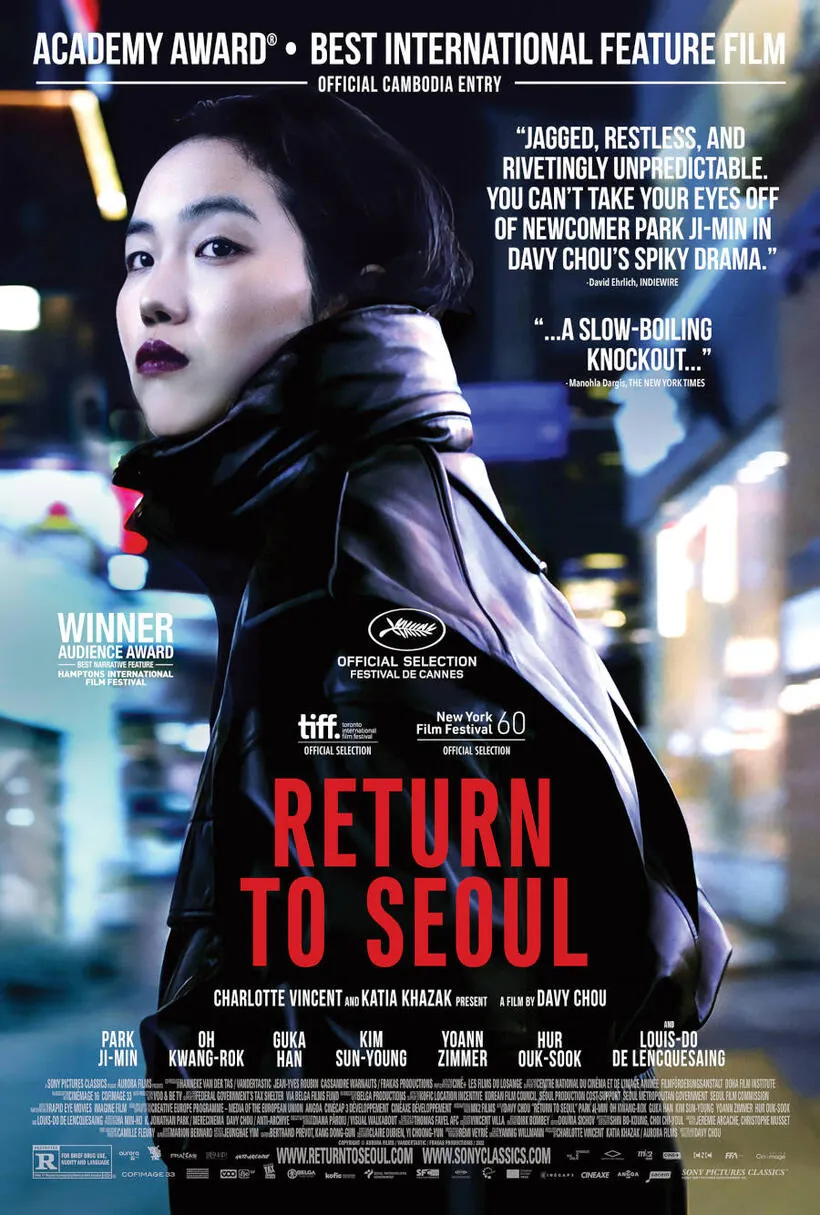
Day 7 brings us back to Seoul, where I dedicate time to shopping for souvenirs and enjoying final night activities in this vibrant city.
Souvenir Shopping
- Hongdae: I head to Hongdae, known for its vibrant shopping streets. The area offers a variety of unique souvenirs, including handmade crafts and trendy fashion items. I find that strolling through the eclectic markets and boutiques is a joy.
- Myeongdong: Next, I visit Myeongdong, a popular shopping district. From traditional Korean items to modern beauty products, Myeongdong has it all. The bustling streets are filled with vendors and shops, each offering something special.
- Gwangjang Market: My last shopping stop is Gwangjang Market, a traditional market where I discover local snacks, handicrafts, and traditional clothing. The market’s lively atmosphere and abundance of unique items make it a perfect spot for finding authentic Korean souvenirs.
- N Seoul Tower: For the final night, I visit N Seoul Tower. The night view from the observation deck offers breathtaking panoramic views of Seoul illuminated by city lights. It’s an iconic experience that I wouldn’t miss.
- Jjimjilbang: To unwind, I head to a traditional Korean spa, known as a Jjimjilbang. These spas offer hot tubs, saunas, and salt rooms. The relaxing environment helps me rejuvenate before the journey back home.
Returning to Seoul on Day 7 is a perfect way to cap off my memorable trip, combining shopping for keepsakes with indulging in local experiences.
Conclusion
Traveling through Korea in seven days offers a perfect mix of history, culture, and natural beauty. From the bustling streets of Seoul to the serene landscapes of Jeju Island, each day brings its own unique experiences. The itinerary balances city life with tranquil escapes, ensuring you get the best of both worlds. Whether you’re wandering through ancient palaces or relaxing at a Jjimjilbang spa, Korea’s diverse attractions promise an unforgettable journey. This seven-day adventure is designed to leave you with lasting memories and a deep appreciation for Korea’s rich heritage and vibrant modernity.
Frequently Asked Questions
What are the must-visit historical sites in Seoul?
Seoul’s must-visit historical sites include Jogyesa Temple and Gyeongbokgung Palace. These sites offer a glimpse into Korea’s rich cultural and religious history.
What can I expect to see on Nami Island?
Nami Island is famous for its beautiful tree-lined roads, unique cultural experiences, and outdoor activities. It’s a great place for walking, biking, and taking in the natural scenery.
What are the highlight attractions in Busan?
In Busan, don’t miss the beaches like Haeundae, cultural sites such as Haedong Yonggungsa Temple, and bustling markets like Jagalchi Fish Market.
What makes Jeju Island unique?
Jeju Island is known for its stunning natural landscapes, including volcanic craters like Seongsan Ilchulbong, beautiful beaches, and lush greenery. It’s perfect for nature lovers and adventurers.
How can I experience traditional Korean culture?
To experience traditional Korean culture, visit Andong Hahoe Folk Village. It’s a preserved village showcasing traditional Korean architecture, customs, and folk performances.
What activities are recommended for the last day in Seoul?
On the last day in Seoul, go souvenir shopping in Hongdae, Myeongdong, and Gwangjang Market. End your day with a night view from N Seoul Tower and relaxation at a Jjimjilbang spa.
How should I prepare for a seven-day trip to Korea?
Prepare for a seven-day trip to Korea by planning your itinerary, booking accommodations in advance, and familiarizing yourself with local customs and transportation options.
Are there any local foods I must try?
Yes, you must try local specialties like kimchi, bibimbap, and street foods such as tteokbokki and hotteok. These dishes offer a taste of authentic Korean cuisine.
What is the best way to travel between cities in Korea?
The best way to travel between cities in Korea is using the efficient KTX high-speed train, which connects major cities like Seoul, Busan, and Daegu quickly and comfortably.
Is it easy to find English-speaking guides or signs?
Yes, it is relatively easy to find English-speaking guides and signs in major tourist areas, especially in Seoul, Busan, and Jeju Island. Many services cater to international tourists.

